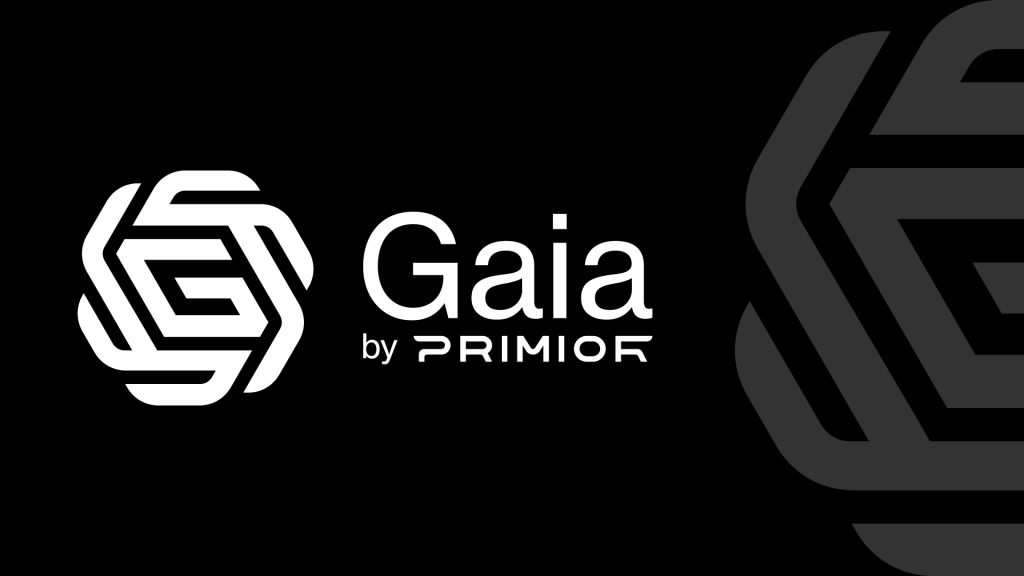The Qualified Opportunity Fund initiative stands as America’s largest economic development program. It covers 8,700 designated zones throughout all 50 states and gives investors remarkable tax benefits. This program lets you delay capital gains taxes until April 2027. You’ll also get access to some of the best federal tax incentives seen in recent years.
Your investment in a Qualified Opportunity Fund can reduce your capital gains tax basis by 15% if you hold it for seven years. After 10 years, you might even qualify for unlimited tax-free growth. The program gives you 180 days to reinvest your gains after selling appreciated assets. These features make it a perfect fit for stock market and real estate investors who want tax-efficient ways to grow their money.
The hidden benefits of Qualified Opportunity Funds could substantially change your 2025 investment strategy. This piece explains the tax advantages and investment requirements you should know, especially if you want to defer current capital gains or create opportunities for tax-free growth over time.
Understanding Qualified Opportunity Fund Basics
Qualified Opportunity Funds are investment vehicles that work as partnerships or corporations. They give you a chance to get tax advantages when you invest in designated opportunity zones. The Tax Cuts and Jobs Act of 2017 created this groundbreaking approach to economic development.
What Makes a Fund ‘Qualified’ in 2025
A fund needs to keep at least 90% of its assets in qualified opportunity zone property to get qualified status. The fund must also self-certify by filing Form 8996 with their federal income tax return. This certification needs the fund to calculate the ratio of qualified opportunity zone property to total assets twice a year – after six months and on the tax year’s last day.
A fund’s qualified property covers three main categories:
- Qualified opportunity zone stock
- Qualified opportunity zone partnership interests
- Qualified opportunity zone business property
Real estate investments require the fund to start new construction or make major improvements to existing properties. These improvements must be worth more than the fund’s original investment over 30 months.
Key Investment Requirements
Your investment must be an equity interest, not a debt instrument. The fund must also be set up under the laws of any of the 50 states, District of Columbia, U.S. possessions, or federally recognized Indian tribal governments.
The fund must buy assets after December 31, 2017 for property investments. The “substantial improvement” rule says improvements to existing property must be worth more than the original purchase price within 30 months. To cite an instance, a fund buying property for $1 million needs to invest over $1 million in improvements during this time.
Types of Eligible Gains
Capital gains and qualified 1231 gains are eligible if they meet two main criteria:
- Recognition for federal income tax purposes before January 1, 2027
- No derivation from transactions with related parties
The program works with different types of appreciated assets:
- Real estate properties
- Stocks and bonds
- Cryptocurrencies
- Artwork and collectibles
- Tangible and intangible business assets
Gains from installment sales can qualify for deferral. The 180-day investment period starts when you receive each installment payment. Non-resident alien individuals and foreign corporations can join too, but they must give up applicable treaty benefits to choose gain deferral.
Schedule a strategy consultation at https://primior.com/book/ to learn how these requirements line up with your investment goals. Good structure and timing help you get the most tax benefits while following all regulatory requirements.
Hidden Tax Benefits Beyond Basic Deferrals
Qualified opportunity funds go beyond simple tax deferrals and provide sophisticated tax advantages worth thinking about. Smart investors can tap into the full potential of these hidden benefits.
Step-up Basis Advantages
The step-up basis structure helps reduce your tax liability when you hold investments strategically. Your basis goes up by 10% of the deferred gain after holding your qualified opportunity fund investment for five years. You get an additional 5% step-up after seven years, which brings your total basis increase to 15%.
A $1 million capital gains investment held for seven years could exclude $150,000 from future taxation. The timing of your investment plays a vital role since these step-up benefits need specific holding periods.
Permanent Gain Exclusion Strategies
The most powerful advantage comes after holding for 10 years. You can permanently exclude all post-investment appreciation from capital gains taxes at this point. This works through a basis adjustment mechanism that raises your investment’s tax basis to its fair market value when you sell.
These strategic chances exist:
- You can exclude gains from qualifying QOF partnership or S corporation investments
- You get to eliminate gains from asset sales by the QOF
- Exclusions apply to certain lower-tier partnership transactions
Estate Planning Benefits
Qualified opportunity funds are a great way to get tax-efficient wealth transfer strategies through estate planning:
QOF investments transferred to grantor trusts keep the tax deferral benefits without triggering immediate gain recognition. This lets you remove appreciation from your taxable estate using tax basis instead of fair market value.
Your death before December 31, 2026, does not trigger the deferred gain. Your beneficiaries get the QOF with original tax benefits intact, which includes:
- Tax deferral until 2026
- Potential tax-free appreciation
- The original holding period from your investment
An intentionally defective grantor trust (IDGT) can boost tax efficiency. This structure means you pay income taxes while trust assets stay out of your estate. Your beneficiaries receive assets that grow without income tax reductions.
Book a consultation at https://primior.com/book/ to learn about how these advanced tax benefits fit your investment strategy. Our core team will help arrange your qualified opportunity fund investments to optimize immediate and long-term tax advantages.
Smart Investment Timing for Maximum Returns
Smart timing choices drive the success of qualified opportunity fund investments in 2025. You can get the best tax benefits and lower risks by knowing the key deadlines and holding periods.
Critical 2025 Deadlines
December 31, 2026 is a crucial date that affects capital gains tax deferral benefits. Several time-sensitive rules need your attention in 2025:
Investors must put their capital gains into the fund within 180 days of getting them to qualify for tax benefits. The window usually starts on the last day of the tax year for gains from pass-through entities.
Section 1231 gains have a 180-day investment window that starts December 31, 2024. This gives you until June 29, 2025, to move funds into a qualified opportunity fund. You can invest both principal and gains during this time, though tax exemption applies only to the gain portion.
Investment Holding Periods
The tax benefits grow better with longer holding periods. A five-year investment gets you a 10% basis step-up. When you reach seven years, you get another 5% step-up, which brings your total reduction to 15%.
The best benefit comes after 10 years – any appreciation becomes tax-free. Financial analysis shows this long-term advantage is worth more than the combined deferral and basis step-up benefits.
Your best timing moves for 2025:
- Put in quarterly redemption requests on day one of each calendar quarter
- Plan for a 90-day processing time for redemption requests at common NAV
- Early redemptions between years 1-10 will cost you a sliding discount starting at 10% of NAV
New legislation might bring more chances. The Opportunity Zones Transparency, Extension and Improvement Act from September 2023 aims to:
- Move the deferral deadline from 2026 to 2028
- Let funds invest in other funds
- Add more reporting rules
Book a meeting at https://primior.com/book/ to get tailored advice on your qualified opportunity fund timing strategy. Our experts will help you structure investments to get the most tax benefits within the crucial 2025 deadlines.
Risk Management in Opportunity Zone Investing
Smart qualified opportunity fund investing needs careful risk management. You must understand possible risks and put strong safeguards in place to protect your investment.
Due Diligence Checklist
Before you invest any money, review these key elements:
- Verify fund certification through Form 8996 filing status
- Get into the fund’s 90% asset holding compliance record
- Check property acquisition dates (must be after December 31, 2017)
- Make sure substantial improvement plans exceed original purchase price
- Review working capital safe harbor compliance
Market basics in the opportunity zone location need careful review. Look at population growth trends, job market strength, and local government incentives. The fund sponsor’s track record and experience with similar investments also need thorough review.
Common Investment Pitfalls
Several big mistakes can affect qualified opportunity fund results:
Missing IRS Form 8996 or Form 8997 filing deadlines might cost you tax benefits unless you have a good reason. Relying on property tax statements instead of formal appraisals for price allocation between land and building parts creates risks.
Poor liquidity planning is another big challenge. Many investors don’t keep enough reserves to pay 2027 tax obligations on deferred gains. The special 180-day rule for gains on Schedule K-1 often causes problems.
Projects face risks from construction delays, political shifts, and market changes. Natural disasters, fires, or floods during development could destroy fund investments.
Exit Strategy Planning
A complete exit strategy is vital to maximize returns. After 10 years, you can structure exits without worrying about depreciation recapture. Qualified opportunity funds can reinvest proceeds into new projects within 12 months while keeping investor benefits.
Think about these strategic exit options:
- Direct asset sales with proceeds reinvestment
- REIT conversion for better tax efficiency
- Initial public offering potential for larger portfolios
The 10-year mark lets investors avoid depreciation recapture concerns when selling opportunity zone projects. This works even if earlier investments were sold before meeting the holding period requirement.
Want to learn more about risk management strategies for your qualified opportunity fund investments? Book a consultation at https://primior.com/book/. Our team will help build strong protection plans and time your exit for the best tax advantages.
Advanced Tax Optimization Techniques
Tax benefits from qualified opportunity funds need sophisticated strategies that go beyond simple investment approaches. You can improve your returns by combining tax incentives and learning about state-specific advantages.
Stacking Multiple Tax Benefits
Qualified opportunity funds give you unique ways to combine tax incentives. You can pair these investments with low-income housing tax credits for affordable housing projects. Historic rehabilitation tax credits also work well with opportunity zone investments. Nearly 79% of historic tax credit rehabilitation expenses happen in economically distressed areas.
Here are proven approaches to structure combined benefits:
- Integrate new markets tax credits for community development initiatives
- Use solar energy credits for alternative energy projects
- Apply research and development credits for innovative businesses within opportunity zones
Real estate investments’ substantial improvement requirement works naturally with historic tax credit programs. The 24-month rehabilitation period for historic properties fits within the opportunity zone’s 30-month substantial improvement window. This timing lets you meet both programs’ requirements at once.
State-Level Tax Considerations
Your overall returns depend on state tax treatment, which varies by jurisdiction. Most states accept federal deferral of gains on qualified opportunity zone investments. All the same, some states have specific restrictions or offer extra incentives:
Arkansas restricts tax deferral benefits to in-state qualified opportunity zones. Wisconsin gives individual taxpayers who invest in Wisconsin qualified opportunity funds an extra income subtraction. Ohio offers a non-refundable tax credit equal to 10% of equity funds invested in Ohio opportunity zones.
States improve federal benefits through:
- Income tax deductions
- Additional capital gain exclusions
- Supplementary basis adjustments
- State-specific tax credits
West Virginia stands out by offering deductions for certain income from business activity in its opportunity zones. This eliminates state income taxes for qualified opportunity zone businesses for up to ten years.
Here’s what you need to check to get the most from state-level benefits:
- Your state’s IRC conformity tie-in date
- Starting point to compute state income tax liability
- State-specific restrictions on opportunity zone investments
- Extra incentives for in-state investments
Trusts and legal entities add another layer of tax optimization possibilities. You can create generational wealth transfer strategies through careful structuring of pass-through entities and trusts. A properly structured $5 million cash gift placed in a qualified opportunity fund, combined with appropriate trust arrangements, can benefit current investors and future generations.
Schedule a consultation at https://primior.com/book/ to learn about combining multiple tax benefits and navigating state-specific advantages. Our team will help structure your qualified opportunity fund investments to maximize federal and state-level tax advantages while ensuring compliance with all regulatory requirements.
Conclusion
Qualified Opportunity Funds are powerful investment vehicles that provide substantial tax advantages when you invest in designated opportunity zones. These benefits go way beyond the reach of simple tax deferrals. They cover step-up basis advantages, permanent gain exclusions, and sophisticated estate planning options.
The December 31, 2026 deadline for capital gains tax deferral benefits makes smart timing crucial as 2025 approaches. Your success relies on watching holding periods, reinvestment windows, and compliance requirements carefully. A full picture and proper due diligence help manage the associated risks effectively.
State-specific incentives create an extra layer of potential benefits that let you combine multiple tax advantages. Your qualified opportunity fund investments can generate much long-term value and support community development initiatives through proper structuring and timing.
Would you like to maximize these tax benefits while staying compliant with regulations? Our expert team will help structure your qualified opportunity fund investments to get optimal returns. Book your strategy consultation at https://primior.com/book/.















